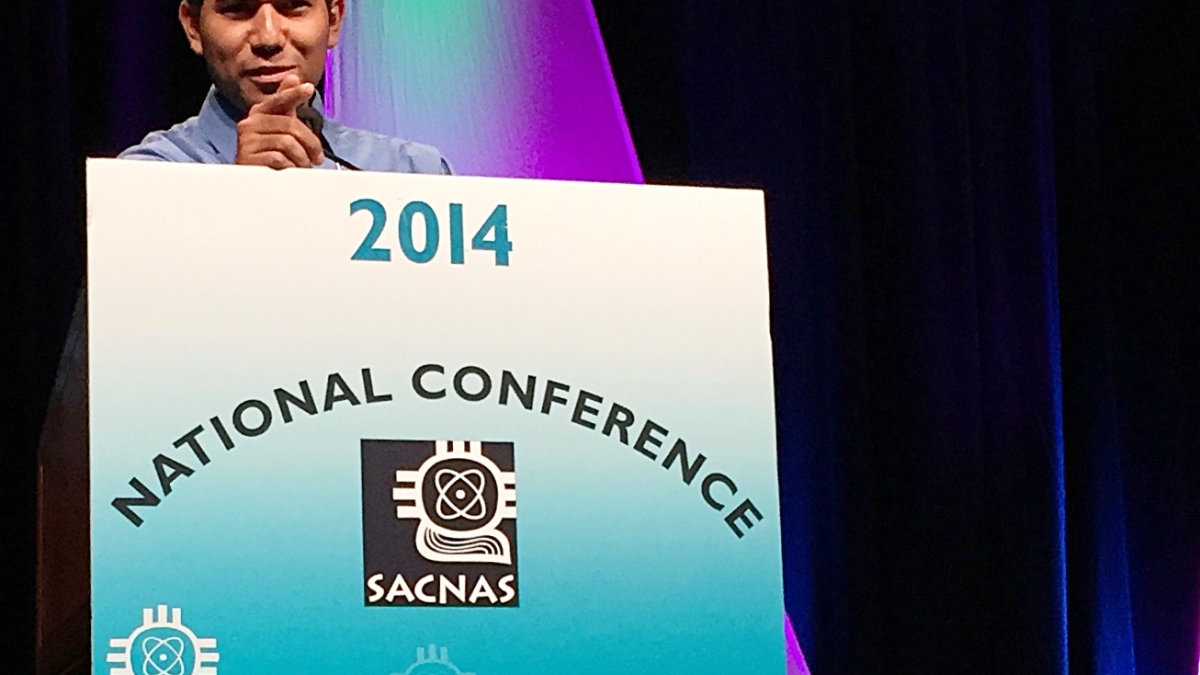Minority students in STEM majors find strong support at ASU

Finding the right kind of academic support during college, especially when pursuing a degree in science, technology, engineering or math (STEM), is said to be an important strategy for success. Yet locating a community of like-minded peers can be difficult for some minority students considering a 2012 National Science Foundation report showed Hispanic and American Indian students make up only about 10 percent of those pursuing STEM degrees.
Despite few in number, minority STEM students at Arizona State University have formed a tight-knit community through a national organization created to support them.
The Society for the Advancement of Hispanics/Chicanos and Native Americans in Science (SACNAS) was founded in 1973 to foster the development of minority students. There are 110 chapters at institutions throughout the U.S., including an active chapter at ASU led by a number of undergraduate and graduate students within the School of Life Sciences.
“Nationally, SACNAS’ goal is to create new opportunities for minority groups in STEM fields, an effort that leads to more diversity in those areas,” said Diana Arroyo, a junior majoring biology and marketing chair for SACNAS’ ASU chapter. “Since our chapter is fairly new, we’re trying to expand our active membership to find new resources — such as internships and research opportunities.”
In addition, biology major and SACNAS president junior Dominic Nicacio said ASU’s chapter offers students a chance to visit medical and graduate schools. This allows members to meet with admissions representatives and faculty from STEM departments.
“There are a lot of students who could really benefit from being part of a supportive community,” Nicacio said. “To join, all you need to do is come to our meetings.”
Members also participate in large events, such as the SACNAS National Conference held in Los Angeles in mid-October. According Ivan Fernandez, a junior majoring in biology and vice president of the group, more than 3,000 people attended to share research, give presentations and learn about career opportunities.
“My favorite part of the conference was personally meeting so many like-minded people,” Fernandez said. “Whether they were students, faculty or professionals, everyone wanted to get to know each other and learn from one another.”
Having so many members together at one time can have a lasting effect on attendees, according to Jorge Ramos, a doctoral candidate in ASU’s environmental life sciences program and a veteran SACNAS member. Ramos was introduced to the organization 11 years ago as a sophomore at the University of Texas at El Paso.
“The day the bus was leaving for the 2003 National Conference in Albuquerque, a colleague and my mentor convinced me to join the group and experience what SACNAS was all about,” Ramos said. “After that trip, I was so inspired to bring the national conference experience to my campus.”
When he returned, Ramos co-founded the UTEP SACNAS chapter. After graduating, he pursued his master’s at University of Washington and joined the chapter there. Now, he uses his experience to advise ASU chapter members, write letters of recommendation, review scholarship applications and talk about research opportunities.
To learn more, the chapter maintains a Facebook page called SACNAS at Arizona State University. The executive board posts event and career information on a regular basis. The chapter’s executive board can be reached at asu.sacnas@gmail.com.